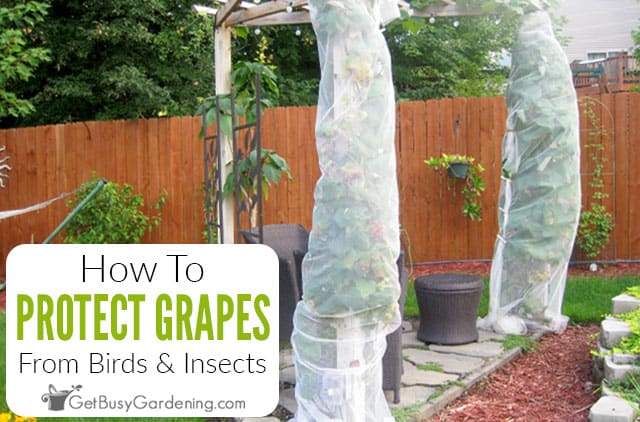Are you a grape farmer or a passionate gardener with a bountiful vineyard? If so, you understand the challenges that come with keeping birds away from your precious grape yield. Birds can be relentless in their pursuit of these succulent fruits, which can lead to significant losses if not properly managed. In this article, we will explore effective methods and strategies that you can implement to protect your grapes from these winged intruders. By utilizing these techniques, you can ensure a fruitful harvest and safeguard your investment in grape production.
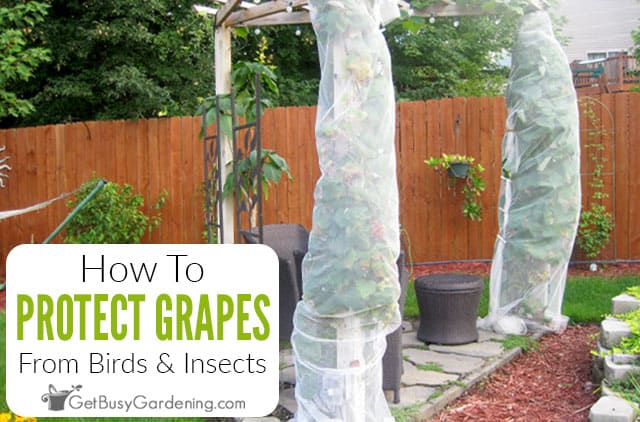
Physical barriers
Netting
Netting is a highly effective physical barrier for protecting grapes from birds. By covering the vines and surrounding area with a fine mesh net, you can prevent birds from reaching the grapes and causing damage. Netting should be secured tightly to ensure birds cannot enter and become trapped inside. It is important to regularly check and maintain the netting to ensure its effectiveness.
Fencing
Installing a fence around your grape vineyard can provide another layer of protection against bird damage. A sturdy fence, preferably made of wire or other durable materials, should be constructed to create a barrier between the birds and the grapes. The fence should be tall enough to discourage birds from flying over it or small enough to prevent them from squeezing through gaps.
Scare devices
Using scare tactics can also deter birds from approaching your grapes. Various scare devices, such as visual and auditory deterrents, can be employed to frighten birds away. Visual deterrents like scarecrows, reflective objects, and spinning windmills can create movement and intimidate birds. Auditory deterrents such as loud noises or recorded bird distress calls can mimic a danger signal, making birds wary of the area.
Natural deterrents
Visual deterrents
Visual deterrents aim to deter birds by creating a visual disturbance or threat. A variety of techniques can be employed, including hanging shiny objects like aluminum foil strips or CDs from the grapevines. These reflective surfaces create flashes of light that can disorient or scare away birds.
Auditory deterrents
Auditory deterrents use sound to discourage birds from approaching the grapes. These can include devices that emit distress calls of predatory birds or loud sounds that startle and disorient birds. It is crucial to periodically change the sound patterns to prevent birds from becoming habituated to the noises.
Taste deterrents
Taste deterrents are substances applied directly to the grapes to make them unpalatable to birds. There are commercially available sprays and gels that can be applied to the grape clusters. These deterrents usually have a bitter or repellent taste, discouraging birds from consuming the fruit.
Predator decoys
Utilizing predator decoys can create an illusion of danger and deter birds from approaching the grapevines. Decoys such as plastic owls, hawks, or snakes can be strategically placed in the vineyard to mimic the presence of natural predators. Moving the decoys periodically helps maintain their effectiveness.
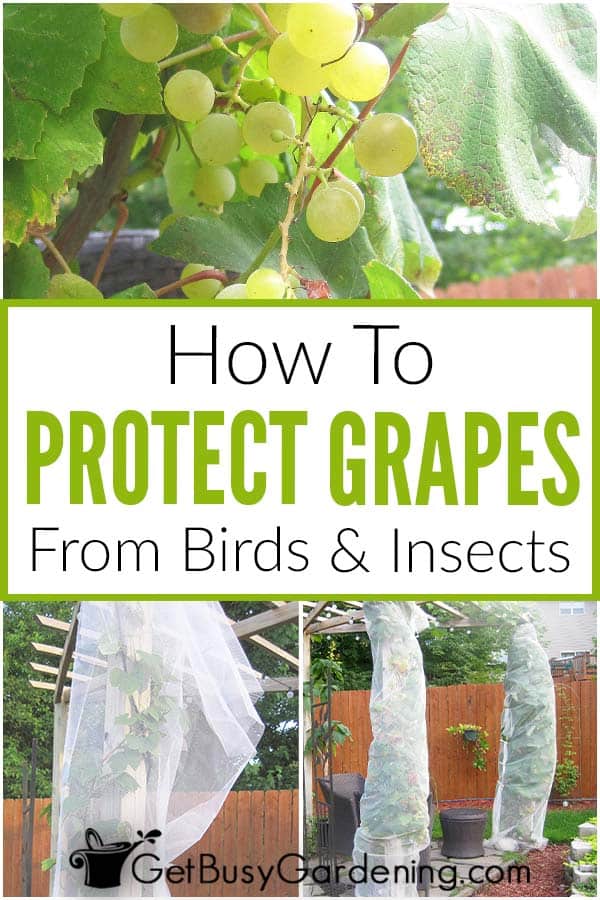
Pruning and training techniques
Canopy management
Proper canopy management plays a crucial role in protecting grapes from bird damage. By pruning excess foliage and maintaining a well-structured canopy, you can reduce the accessibility of the grapes to the birds. This makes it more challenging for them to reach the fruit and decreases the likelihood of damage.
Double curtain system
Implementing a double curtain system provides an additional physical barrier that helps protect the grapes. This system involves creating two layers of trellises, one above the other, with the lower layer serving as a protective shield for the grapes against bird attacks. The gap between the two curtains allows for easier air circulation and sunlight penetration.
Vertical shoot positioning
Vertical shoot positioning (VSP) is a training technique that involves vertically positioning the grapevine shoots along trellises. This method allows better airflow and light exposure while keeping the grape clusters higher off the ground. By elevating the fruit, birds are less likely to reach and damage them.
Open lyre trellis
The open lyre trellis system is another method of training grapevines that can help protect the fruit from bird damage. This system involves spreading out the grapevine canes in a V-shape, resembling the shape of a lyre. The openness of the trellis makes it more difficult for birds to access the grapes and reduces the risk of damage.
Crop manipulation methods
Bird netting
Bird netting is a physical barrier that can be used to cover the entire grapevine to protect the fruit from bird damage. By creating an impenetrable barrier between the birds and the grapes, netting ensures that birds cannot reach or consume the fruit. Proper installation and maintenance of the netting are vital to ensure its effectiveness.
Reflective tape or objects
Hanging or attaching reflective tape or objects near the grapevines can help deter birds. The movement and flashes of light produced by the reflecting surfaces can confuse and discourage birds from approaching the grapes. Regularly changing the tape or objects’ positions and patterns can enhance their effectiveness.
Fruit bags
Individual fruit bags can be used to enclose each grape cluster, protecting them from bird damage. These bags are made of breathable material that allows air and sunlight to reach the grapes while sheltering them from bird attacks. The fruit bags need to be carefully secured around each cluster to ensure complete coverage.
Changes in harvesting times
Adjusting the timing of grape harvesting can also help minimize bird damage. By harvesting grapes earlier than usual, you can reduce the window of opportunity for birds to consume ripe fruit. However, it is essential to consider the grape’s ripeness and maturity to ensure optimum flavor and quality.

Grape variety selection
Early ripening varieties
Choosing grape varieties that ripen earlier in the season can be a proactive measure to reduce bird damage. Early ripening varieties allow for harvest before birds have become highly attracted to the vineyard. By selecting grapes that mature earlier, you minimize the overlap between the ripening phase and the peak bird migration period.
Small berry sizes
Birds often seek out larger fruits, making varieties with smaller berry sizes less attractive to them. By selecting grape varieties characterized by smaller berries, you can reduce the appeal of your vineyard to birds. However, it is essential to consider other factors like taste, yield, and market demand when choosing grape varieties.
Thick-skinned grapes
Grape varieties with thick skins are generally more resilient to bird damage. Birds typically prefer grapes with thin skins, as they are easier to pierce and access the juicy pulp. By planting grape varieties with thicker skins, you create a physical barrier that makes it more challenging for birds to penetrate and damage the fruit.
Plant diversions
Bird feeders
Attracting birds away from your grapevines can be achieved by providing them with alternative food sources. Bird feeders stocked with bird-friendly seeds or nectar can lure birds away from the grapes and redirect their attention. Place the feeders away from the grapevines to minimize the chances of birds switching between the feeders and the vines.
Fruit trees as decoys
Planting fruit trees near your grapevines can act as decoys, diverting bird attention and reducing grape damage. Birds are naturally attracted to fruit trees when available, and by providing them with an alternative food source, you decrease their reliance on your grapevines. However, it is important to ensure regular maintenance and care for these fruit trees as well.
Alternative crops
Consider planting alternative crops that birds prefer over grapes. By providing birds with an attractive food source elsewhere in your vineyard or nearby, you can minimize their interest in the grapes. Research local bird preferences and select crops that are known to be particularly appealing to birds in your region.
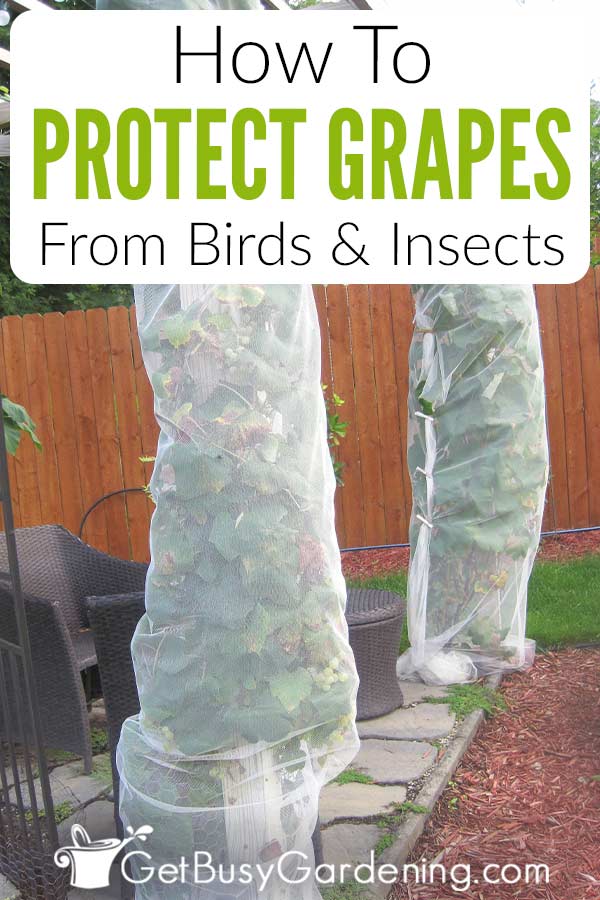
Integrated Pest Management (IPM) strategies
Habitat modification
Modifying the vineyard habitat can help discourage birds from nesting or roosting in the area. This can include removing or reducing potential nesting sites, such as tall trees or dense shrubs, that provide shelter for birds. By minimizing habitat suitability, you can discourage birds from establishing a permanent presence in your vineyard.
Bird deterrent sprays
Bird deterrent sprays can be an effective tool in an Integrated Pest Management (IPM) program. These sprays contain ingredients that create an unpleasant taste or smell, deterring birds from consuming the grapes. It is important to follow the instructions on the spray’s label and apply it at the recommended frequency to maintain its effectiveness.
Attracting natural bird predators
Encouraging natural bird predators, such as owls, hawks, or other raptors, into your vineyard can help control bird populations. Providing suitable nesting sites, perching platforms, and installing nesting boxes can attract these predator birds. The presence of natural predators acts as a deterrent to other birds as they perceive the area as potentially dangerous.
Monitoring bird activity
Regularly monitoring bird activity in your vineyard allows you to assess the effectiveness of your bird control methods and make necessary adjustments. Record observations of bird behavior, identify any patterns, and note any significant changes. This information can help you determine which methods are working best and when additional measures need to be taken.
Trapping and relocation
Live traps
Using live traps can be an option for catching birds that are causing excessive damage to grapes. These traps are designed to capture birds without causing harm, allowing you to relocate them to a suitable alternative location away from the vineyard. Check with local wildlife authorities for regulations and guidelines regarding trapping and relocation.
Professional assistance
When bird damage becomes a persistent problem, seeking professional assistance from avian control specialists or wildlife biologists may be necessary. These experts have extensive knowledge and experience in bird control techniques and can provide customized solutions tailored to your specific vineyard and bird species. They can also ensure compliance with local regulations.
Legal considerations
It is crucial to be aware of and comply with local regulations before employing any bird control methods. Some bird species are protected by law, and it is illegal to harm or disturb them without proper authorization. Obtain the necessary permits or licenses required for using specific bird control methods and ensure you are adhering to all legal requirements.
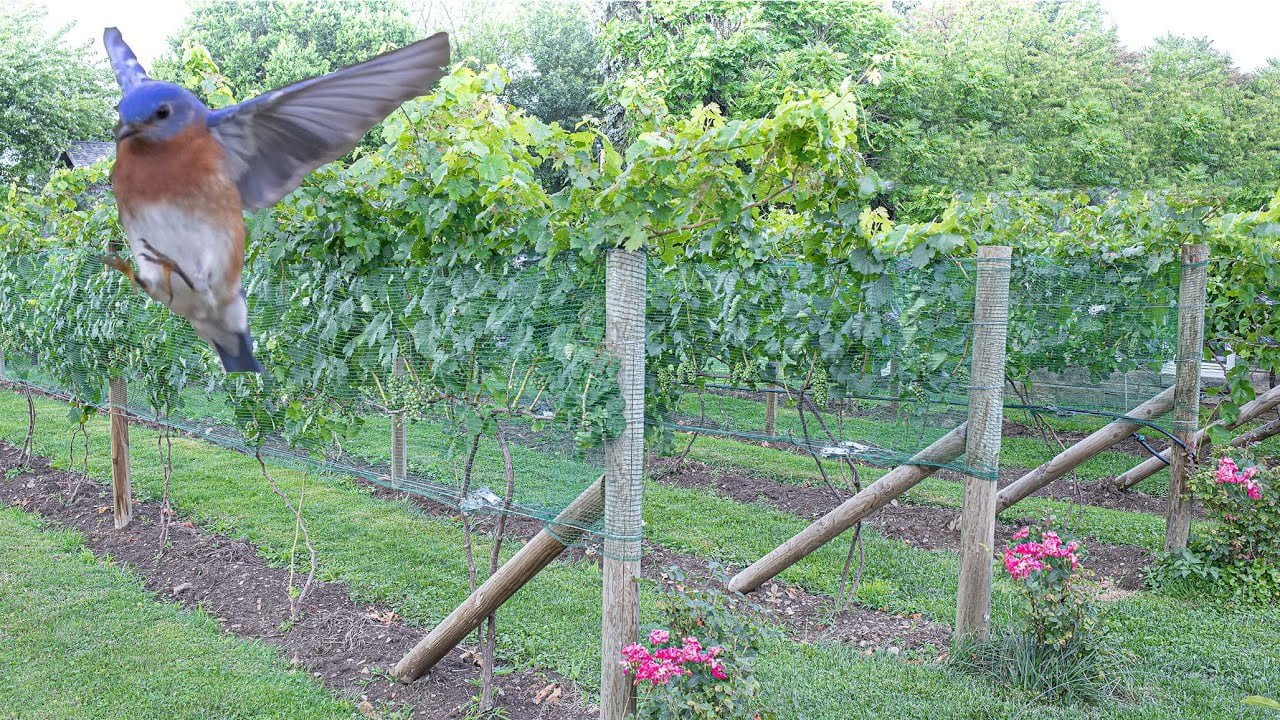
Cultural practices
Proper pruning techniques
Pruning grapevines with proper techniques not only promotes vine health and vigor but also aids in bird control. Removing excess foliage and simplifying the vine structure makes it more difficult for birds to access the grapes. Open, well-managed canopies reduce hiding places and diminish opportunities for birds to feed undetected.
Adequate nutrient management
Providing optimal nutrient levels for grapevines is essential for maintaining plant health and vigor. When grapevines are well-nourished, they are better equipped to withstand bird damage. Proper nutrient management practices help ensure strong growth, healthy foliage, and an overall robust vineyard that can better resist bird attacks.
Regular vineyard maintenance
Regular maintenance practices, such as weed control, disease management, and vineyard cleanliness, can indirectly contribute to bird control. A well-maintained vineyard with minimized weed growth and reduced sources of pests and diseases creates a less attractive environment for birds. Additionally, maintaining clear pathways and removing fallen grapes can discourage birds from lingering in the area.
Legal methods
Obtaining permits
Before implementing any bird control methods, it is essential to research and understand the necessary permits or licenses required in your area. Certain bird species are protected by law, and interfering with them without the appropriate authorization is illegal. Contact local conservation or wildlife authorities to obtain the necessary permits and ensure compliance with regulations.
Using licensed bird control methods
When selecting bird control methods, opt for those that have been approved and licensed for use in bird management. These methods have undergone proper testing and evaluation, ensuring their effectiveness and minimizing harm to birds or the environment. Using licensed products or techniques provides reassurance that you are employing safe and legal measures.
Complying with local regulations
Compliance with local regulations is crucial in bird control efforts. Familiarize yourself with the specific guidelines and restrictions in your area, as they may vary. It is essential to adhere to legal requirements to avoid penalties or legal complications. Stay informed about any updates or changes in regulations to ensure ongoing compliance.
